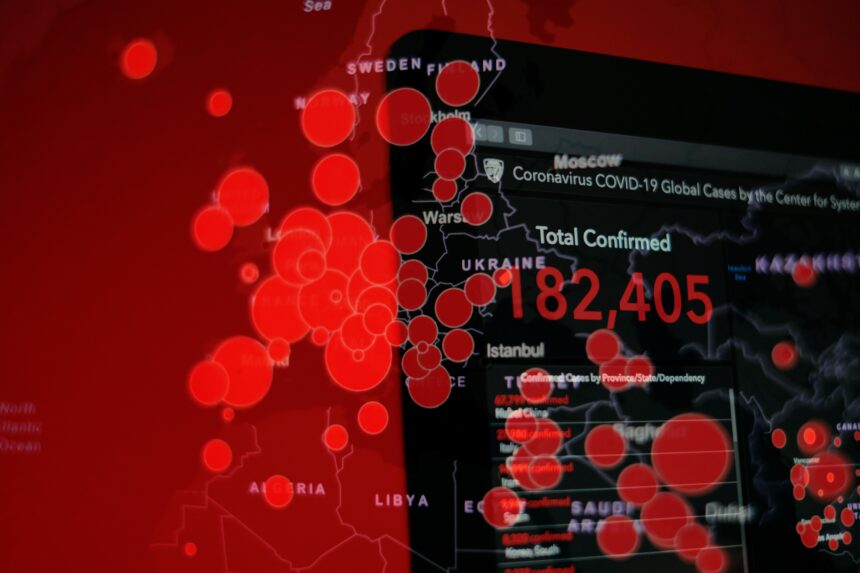The Autonomous Adversary: GenAI’s Role in Lateral Movement
Ransomware is no longer a simple malware deployment; it is a complex, multi-stage extortion operation. The most destructive phase is Lateral Movement—the period after initial access where the attacker moves through the network, identifies high-value assets, elevates privileges, and locates backup systems before encryption.
In 2025, Generative AI (GenAI) has fundamentally changed this phase. Instead of a human threat actor manually running tools like PowerShell or Mimikatz, Autonomous Ransomware agents are taking over.
- Automation of Reconnaissance: GenAI agents can ingest massive amounts of data from the initial foothold—network maps, configuration files, Active Directory structures—and use Large Language Models (LLMs) to instantly synthesize an optimal attack path. This analysis, which used to take a human days, now takes seconds.
- Adaptation and Evasion: According to the Microsoft 2025 Digital Defense Report, adversaries are leveraging GenAI to automate lateral movement, discover vulnerabilities, and evade security controls in real-time. Autonomous malware is capable of adapting its tactics on the fly, changing protocols or credentials to bypass static firewalls.
The result is a collapse of the defender’s response window. CrowdStrike’s 2025 State of Ransomware Survey reports that 76% of organizations struggle to match the speed and sophistication of these AI-powered attacks, making traditional, human-led response obsolete.
Section 1: The Predictive Defense—Simulating the Attacker’s Mind
The only way to defeat autonomous lateral movement is with autonomous, predictive defense. Defenders are now using the same GenAI technology as attackers to anticipate their next steps.
1. Behavior Modeling and UEBA
Security platforms are evolving from simple User and Entity Behavior Analytics (UEBA) to AI-Powered Predictive UEBA.
- Baseline Establishment: The system uses ML to build a hyper-detailed baseline of “normal” behavior for every user and machine identity: which servers they access, what time they log in, what commands they run.
- Generative Anomaly Detection: GenAI is used to generate thousands of hypothetical, subtle deviations from this baseline. The system can then distinguish a true threat from benign noise (e.g., distinguishing a legitimate admin running a script for the first time from a compromised account executing a
whoamicommand followed by port scanning). This drastically reduces alert fatigue—a major source of human error in SOCs. - Predictive Pathing: By analyzing the patterns of compromised accounts, the AI can predict the likelihood of a lateral pivot toward the Domain Controller or the core financial server. This allows the system to preemptively tighten access controls around the predicted target before the attacker even initiates the connection.
2. Digital Twin Network Mapping
High-fidelity security systems create a Digital Twin of the corporate network in an isolated, secure environment.
- Attack Simulation: GenAI agents are unleashed inside this twin, tasked with finding the fastest route from a simulated initial compromise (e.g., a vulnerable HR laptop) to a crown jewel asset (e.g., the customer database).
- Weak Link Identification: The AI simulation reveals hidden, unintended trust relationships (e.g., a firewall rule left open, or a service account with excessive permissions) that a human audit would miss. This allows the security team to patch the weakest lateral movement paths before the attacker exploits them.
Section 2: Active Defense—Deception and Containment
Prediction buys time, but autonomous ransomware requires an active, automated response. The modern defense strategy focuses on Deception Technology and rigid Zero Trust Microsegmentation.
1. Deception Technology: Luring the Autonomous Agent
GenAI-driven lateral movement is predictable because the AI is programmed to seek the shortest, most efficient path to privilege. Deception technology exploits this efficiency imperative.
- Honeypots and Decoys: Realistic, non-production decoys—like fake file shares, fabricated database entries, and synthetic user credentials (all generated by AI)—are strategically placed along the most likely attack paths identified in Section 1.
- Baiting the Hook: When the autonomous ransomware agent inevitably interacts with these decoy assets (e.g., attempts to use the fake credentials to pivot), the intrusion is confirmed instantly.
- Instant Containment: Unlike traditional alerts, an interaction with a decoy is a zero-false-positive indicator of compromise (IOC). The security system instantly triggers autonomous response actions, such as isolating the source host, revoking the compromised credentials, and launching forensic collection—all before the real assets are touched. CounterCraft and similar platforms highlight the use of deception to capture and analyze attackers’ moves, turning their tactics into actionable defense intelligence.
2. Enforcing Isolation with Microsegmentation
The core tenet of preventing lateral movement is ensuring that a breach of one workload cannot lead to the breach of another.
- Dynamic Segmentation: Traditional microsegmentation was difficult to manage due to the sheer volume of rules. GenAI is solving this complexity. The AI learns the genuine, documented dependencies between applications and automatically generates the minimum necessary least-privilege policies.
- User-to-App (Not User-to-Network): By leveraging Zero Trust Architecture (ZTA), communication is restricted to the specific applications or services required by the user, hiding the underlying network infrastructure. As Zscaler notes, this architectural shift hides users and applications behind a cloud proxy, making them invisible and undiscoverable from external threats.
Section 3: The Strategic Response—Autonomous Remediation
The ultimate goal is to achieve Mean Time to Resolution (MTTR) measured in seconds, not hours. This requires security tools that can move from detection to autonomous remediation without human intervention.
1. SOAR and LLM Integration
Security Orchestration, Automation, and Response (SOAR) platforms are now integrated with LLMs to accelerate response actions.
- Case Summary Generation: When an incident is flagged, the LLM instantly analyzes the raw data (network logs, endpoint telemetry, policy violations) and generates a concise, natural language summary, drastically reducing the time a SOC analyst spends understanding the event.
- Automated Playbook Execution: Based on the LLM’s classification of the threat (e.g., “Confirmed Lateral Movement Attempt: Privilege Escalation via Pass-the-Hash”), the SOAR platform executes a pre-approved playbook—automatically isolating the host, forcing a password reset on the compromised identity, and rolling back suspicious changes via an EDR tool.
2. Defending Machine Identities
As attackers automate their operations, they are increasingly targeting machine identities (service accounts, API keys) which often hold non-expiring, highly privileged credentials.
- AI for Identity Threat Detection and Response (ITDR): New platforms use AI to continuously analyze the behavior of machine identities. If an API key typically makes 50 calls an hour to a logging service but suddenly attempts 10,000 calls to a financial database, the AI suspends the identity immediately. This capability is essential to blocking the initial stages of automated lateral movement before the attacker can even gain human-level privileges.
Conclusion: The Race for Autonomous Defense
The cybersecurity landscape in 2025 is defined by a technological arms race between adversarial AI and defensive AI. The era of simple perimeter defense and passive log monitoring is over. Ransomware groups are leveraging GenAI to reduce the time from initial access to full domain compromise from hours to minutes.
The strategic imperative for CISOs is clear: Embrace autonomous defense. This involves a three-pronged investment:
- Predictive Intelligence: Using GenAI to simulate and anticipate the attacker’s path.
- Active Deception: Deploying decoys to lure and instantly contain the AI-driven threat.
- Zero Trust Automation: Enforcing dynamic, machine-speed Microsegmentation to ensure that if initial compromise occurs, lateral movement is structurally impossible.
Organizations that transition to this AI-powered Zero Trust architecture will hold the speed advantage necessary to match and ultimately disrupt the next generation of autonomous ransomware threats
Source List
- Microsoft:Digital Defense Report 2025: Safeguarding Trust in the AI Era (2025)
- CrowdStrike:2025 State of Ransomware Report: AI Attacks Outpacing Defenses (2025)
- Zscaler:7 Ransomware Predictions for 2025: From AI Threats to New Strategies (2025)
- Palo Alto Networks:Unit 42 Global Incident Response Report (2025)
- SQ Magazine:AI Cyber Attacks Statistics 2025: Attacks, Deepfakes, Ransomware (2025)

